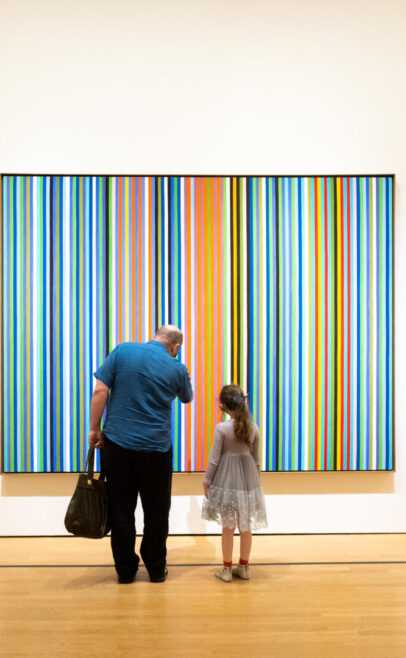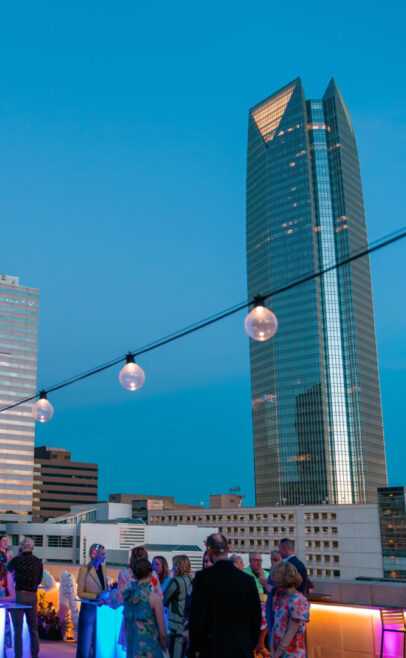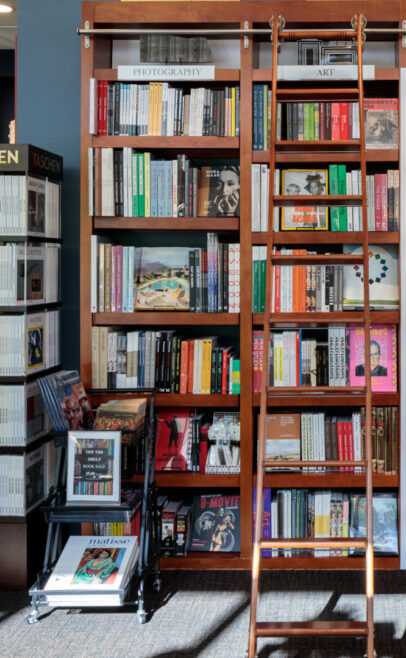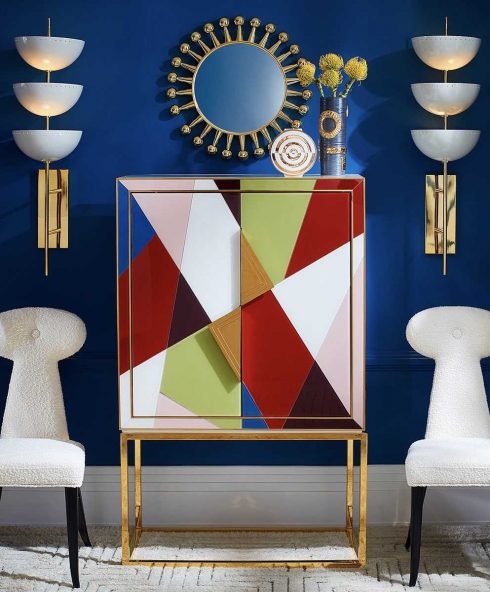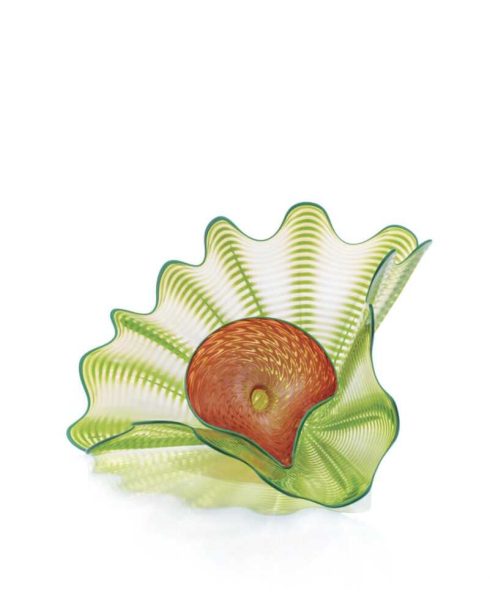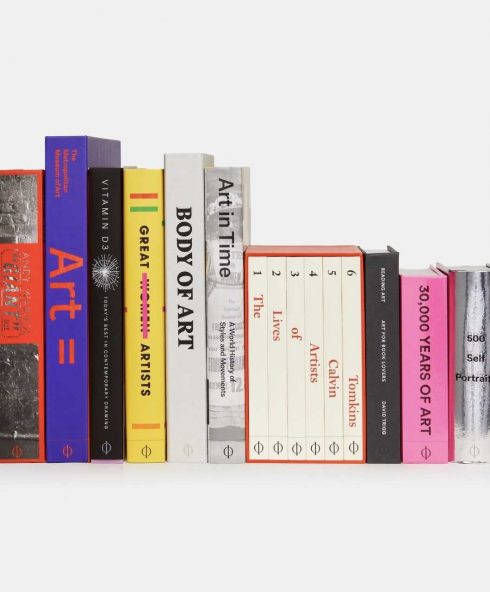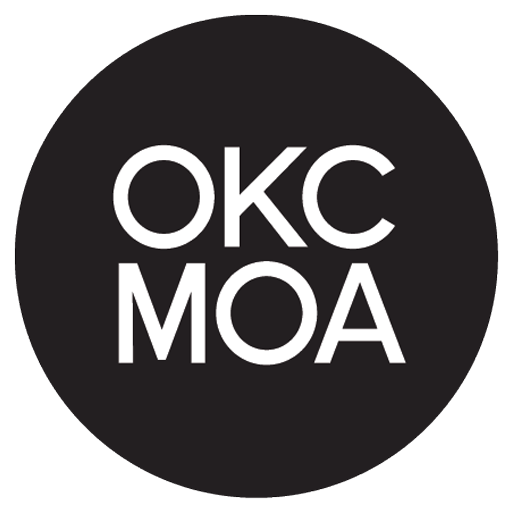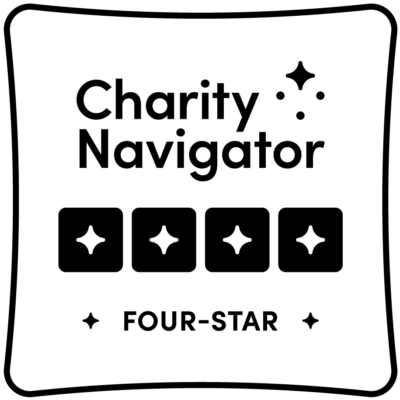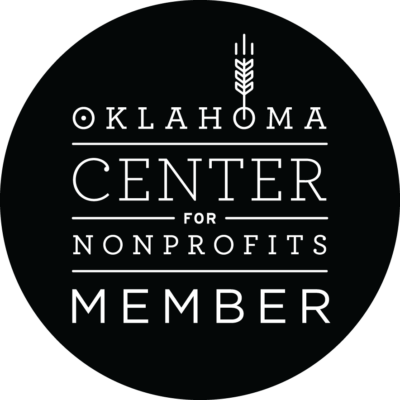The Oklahoma City Museum of Art presented Jonathan Hils: INTERSECTION, September 9, 2010, through January 3, 2011. The second installment of the NEW FRONTIERS: Series for Contemporary Art, INTERSECTION exhibited a selection of large-scale, hand-wrought automobiles by artist Jonathan Hils. These steel and aluminum sculptures expressed the artist’s interest in the American phenomena of oversized vehicles and society’s relationship with them.
Hils’ sculpture investigates the place where identity and the mythology of things intersect. He employs an intensive fabrication process that consists of thousands of welds—individually connected and metaphorically interwoven—to create luminous, large-scale representations of objects of American desire. Whether one identifies with automobiles—in this case, SUVs—as status symbols or as expressions of masculinity and power, Hils reconfigures and feminizes them, in part, questioning aspects of contemporary American culture and how we identify with it.
A native of New Hampshire, Hils is an associate professor of sculpture at the University of Oklahoma. He received his BFA from Georgia State University (1997) and his MFA from Tulane University (1999). Before coming to the University of Oklahoma, he served as an adjunct instructor (drawing and sculpture), studio manager, and technician at the College of Charleston School of the Arts in South Carolina. Hils received the 2005 Oklahoma Visual Art Coalition Fellowship (OVAC) for outstanding creative work in the visual arts. His sculpture is included in public and private collections and has been featured in solo and group exhibitions across the U.S.
NEW FRONTIERS: Series for Contemporary Art presents the work of individual contemporary artists and current perspectives in the field. The Series was created to provide a framework for the exchange of ideas between the Museum, artists, and the community. NEW FRONTIERS connects the Museum to the international dialogue on contemporary art and emphasize the importance of the art-of-our-time as a critical and dynamic part of our daily lives.
A native of New Hampshire, Jonathan W. Hils is an Associate Professor of sculpture at the University of Oklahoma. He received his BFA degree from Georgia State University (1997) and his MFA from Tulane University (1999). Before coming to the University of Oklahoma, Mr. Hils served as an adjunct instructor (drawing and sculpture), studio manager, and technician at the College of Charleston School of the Arts in South Carolina.
The recipient of the 2005 Oklahoma Visual Art Coalition Fellowship (OVAC) for outstanding creative work in the visual arts, Hils’ work is represented in several private and corporate collections including the Hyatt Corporation, Four Seasons, the John Michael Kohler Arts Center, and Equity West Partners. He has shown extensively across the U.S. in solo and group exhibitions. He was also selected for a John Michael Kohler Arts Center Arts/Industry artist residency in 2005.
He has been a visiting artist and lecturer at San Jose State University, the University of Wyoming, Appalachian State University, Longwood University, the College of Charleston, Renmin University (China), Wichita State University, and Brevard College.
Jonathan Hils
Artist’s Statement
My creative interests are informed from a variety of sources including biology, industry, networks, systematic progression, crafts, ornament, textiles and drawing. My general aim to synthesize these entities into works that allow for both an internal and external experience psychologically and physically through the delineation of interior and exterior via the permeable membrane. These forms, whether representational or abstract, allude to both logical organization and chaotic systemization through the meticulous fabrication process of combining many small elements together to define the overall larger entity.
My primary body of work Alleviations / Progressions draws upon more formal ideologies of the sculptural object with sub-contextual associations to the craft object, genderification of objects, material transformation, and the passage of time. These works range from medium to large scale and public works that specifically engage human scale relationships.
Odd (@) Culture is an ongoing project initiated in 2005 that developed from a deliberate reaction to the elevated socio-political culture war in the U.S. post 2001. Conceptually, the aim of this work is to question the American identity as it pertains to both domestic and international perceptions of class, politics and belief systems.
Jon Brandburg’s review in The Oklahoman, Sunday, September 12, 2010
Jonathan Hils: INTERSECTION interview
Jonathan Hils is an associate professor of sculpture at the University of Oklahoma School of Art & Art History. His sculpture is included in public and private collections and has been featured in solo and group exhibitions across the U.S. Jonathan Hils: INTERSECTION exhibits a selection of large-scale, hand-wrought automobiles by the artist. These steel and aluminum sculptures express his interest in the American phenomena of oversized vehicles and society’s relationship with them. During the production of the exhibition, Curator Alison Amick visited with Hils in his studio.
ALISON AMICK: Can you describe your artistic training and how you developed an interest in sculpture?
JONATHAN HILS: I actually started out in music and was a guitar player, following my dream of being in a rock band and recording, but through some very odd life events, I wound up in art school. I walked into the sculpture program—it just seemed natural. It seemed right. That’s where I really started. I went to Georgia State University for my undergrad then finished my MFA at Tulane.
AA: What have been the greatest influences on your work?
JH: When I was working on my undergraduate degree, I had an uncle who was a huge influence—not necessarily on my artistic thinking but more on my thinking about the world. He was a professor for a number of years who woke up one day and decided that his academic life, his home life, and everything that he had achieved to a certain point, was not satisfying. He quit his job and, this is terrible to say, divorced his wife. He moved to the North Georgia mountains to live off of the land, with no electricity and no running water, and proceeded to be an organic farmer, creating hand-hewn country woodenware, making dough bowls, traditional wooden utensils, and cabinetry with no power tools, just doing it by hand.
I would go visit him when I was living in Atlanta; there was this interesting duality of living in the city, having that city experience, and then traveling two hours and being in the mountains with nothing, just you and the land. While I was up there, he introduced me to this whole Appalachian Mountain craft culture—women who were doing these incredible handmade quilts, people who were making handmade lace, woodworkers who were doing a lot of work by hand. That influenced my work ethic, and some of the aesthetics that you see in my pieces relate back to textiles, back to lace making. I think that was a huge influence for me in a roundabout, non-academic way.
Academically, there are influences through Eva Hesse, Richard Deacon, Martin Puryear, David Nash, that post-minimal sensibility that infuses a lot of handmade material work I really enjoy—that’s always been something I have gravitated to.
AA: Describe your artistic process.
JH: My artistic process is incredibly physical. There’s a performative aspect to what I do. How I create is performance art, in a way, because of the repetitive nature of things. I think when you see my work you get a sense of its time and labor. All of this is basically cut by hand, bent by hand, and welded by hand—there is no real automation in it other than the physicality of repeating a process over and over again to achieve the ends that I’m trying to realize.
Another part of my process is this sort of personal game in terms of how I fill in the forms. There is a lot of looking at things and trying to figure out how the light and the lines are going to compact and expand as the viewer moves around the piece. Most of the time I put into sculptures revolves around just stepping back and looking at them. It can be very frustrating, as this process involves working for eight to ten hours a day. Sometimes I step back and say, “I can’t even see that I’ve made any progress.” But, it’s also this extended process that I’m attracted to that I think frustrates most people.
AA: When did you develop an interest in automobiles?
JH: My interest in automobiles started when I was in high school. My dad kept buying these terrible cars for us to learn to drive on. We had a 1970s Ford Pinto—the ones that exploded when people rammed into the back. He also had this weird relationship with Cadillacs. He kept buying these old 1970s Cadillacs, one every other year as our family vehicle. For him, there was a status symbol attached to them, but there was also this sort of disposability—it was a car we were only going to have for a short time.
Also, growing up when I did, in the mid-eighties and going through high school, some friends of mine were involved in muscle cars. Growing up in a very small town in New England, there was also a lot of drag racing and a lot of status connected to who had the cool cars. So there’s a little bit of that in my relationship to vehicles.
AA: When did you begin depicting automobiles and how has your interest in them changed or altered over time?
JH: When I started depicting automobiles, it was more of a political angst that came out of the election in 2004. There was a divisiveness happening in the United States that seemed to have our political parties at more and more disparate ends. Yet, it seemed like they were all trying to achieve the same things.
I started using NASCAR originally. There’s a long history to NASCAR that was completely opposed to how it was perceived at that point in time and how it was being used politically. The fact is that it was started by a bunch of people who were breaking the law and didn’t really have a high regard for family values in a traditional sense. They were against the government and very rebellious, and [in 2004] you have it being used to represent a sort of wholesome way of life and to unify it.
I felt like, using NASCAR, I could key off of something that was completely American, something that started in the United States, a completely American sport. That element of the spectator sport was interesting to me, especially as it is a sport that burns natural resources. It uses rubber, oil, and gas—all for the sake of entertainment.
Then the more I invested in how people thought about sports and cars, the more I felt like there were some interesting things going on economically in the United States, especially with the automakers. The economy, the ecological and environmental concerns that we’re faced with, and how the car as a status symbol is perhaps in flux and changing is interesting to me.
AA: How do you choose specific vehicles for presentation, and then what determines the scale in which you create them?
JH: They all have to be a little bit bigger than life size. I’m not trying to render any of these vehicles in a hyper-realistic fashion. I pull models off the Internet and then, using digital technologies, find distances and measurements. A lot of it is built in space with a rough idea of scale, but most of it is just getting a sense of the identity of the car and trying to pull out some of the essential elements that I think people will identify.
AA: Speak a little about the vehicles you are creating for INTERSECTION.
JH: The muscle cars in the show are pulled directly from the Steve McQueen movie Bullitt, which are a 1968 Mustang Fastback and a ‘68 Dodge Charger. This film is known for its incredible car chase scene that’s a little over 12 minutes and is still regarded as one of the great car chase scenes in cinema. I thought that was an interesting idea. You’ve got this typical, all-American guy being chased by bad guys with overtones of the cold war. The bad guys are in the black car, and Steve McQueen is in this great green car. For the exhibition, the two cars will actually be pointing away from each other rather than chasing each other. I hope people will think a little bit about what that could represent beyond just the aesthetics, not only thinking about the utility of these cars, but also the entertainment of these things chasing each other and where we are now in terms of thinking about ourselves in the bigger picture.
The pickup truck is completely and distinctly an American vehicle, with the idea of it being something you would use for working. The vehicle has been represented in commercials in very patriotic and utilitarian ways, and yet, at the same time, there’s this odd dichotomy of it being used as purely a status symbol and not necessarily fulfilling the identity it used to have. So, I thought of the pickup truck, and I began questioning how many are actually used for a purpose. Are people really thinking about why they have these things and what they could mean?
One pickup truck will hold about 10,000 little play balls. There’s sort of a connection to childhood and also economy. I grew up walking through Kmart, and they had these giant ball towers. As a kid, they always stuck with me, the amazing array of different sizes and colors. It was something that seemed monolithic and beautiful, and yet it had all this potential, imagining all of those things being extracted and having them go free. There’s this tension to that kind of confinement and yet a little bit of playfulness in using the balls, a reference to their use as child-like entertainment. It’s a way of looking at how the vehicles are being used and how people think about using them today, implying a little bit of frivolousness in the whole system.
AA: I understand one of the pickups will have a series of maps placed on top and will be illuminated from within. How did you choose the cities or metropolitan areas that you worked from to create these maps?
JH: There are a lot of countries from the Middle East representing the tensions that have evolved through political and economic entanglements. There are also a number of U.S. cities intermixed with other cities from around the world, including cities from Europe, South America, and the Middle East. Riyadh and Tehran will be included, but it will be incredibly difficult to tell them apart. That is part of the idea of the piece though—once you look at these maps digitally, after I’ve applied the same filters and process to every single image, the only difference really is the way these cities and roads have been placed. Some of them seem very organized, and some of them are incredibly organic and abstract. You can almost sense where they’re from by looking at them. I think there’s an attitude to the line work that gives you a sense of something that might be far eastern or something that’s definitely industrial and western European. Overall, they all blend together.
AA: What does the title Intersection signify for you?
JH: It’s more of a reference to the American identity. I believe we are at a crossroads right now, in how we think about what is happening in the country, how different factions and politics and social interest groups are constantly fighting against each other rather than working together to fix our problems.
Using cars as a symbolic system seems to make the most sense. It’s something that everybody can attune themselves with, especially as they think about where we are as a society and how we got here, based on the economy of the vehicle, and where that’s going to take us in the future.
AA: What future projects are you working on right now?
JH: I have solo shows coming up in 2011 at Oklahoma State University, my gallery in Denver, and JRB Gallery. Other than that, applying for a sabbatical and an artist residency somewhere really, really beautiful and interesting is definitely on the horizon.
